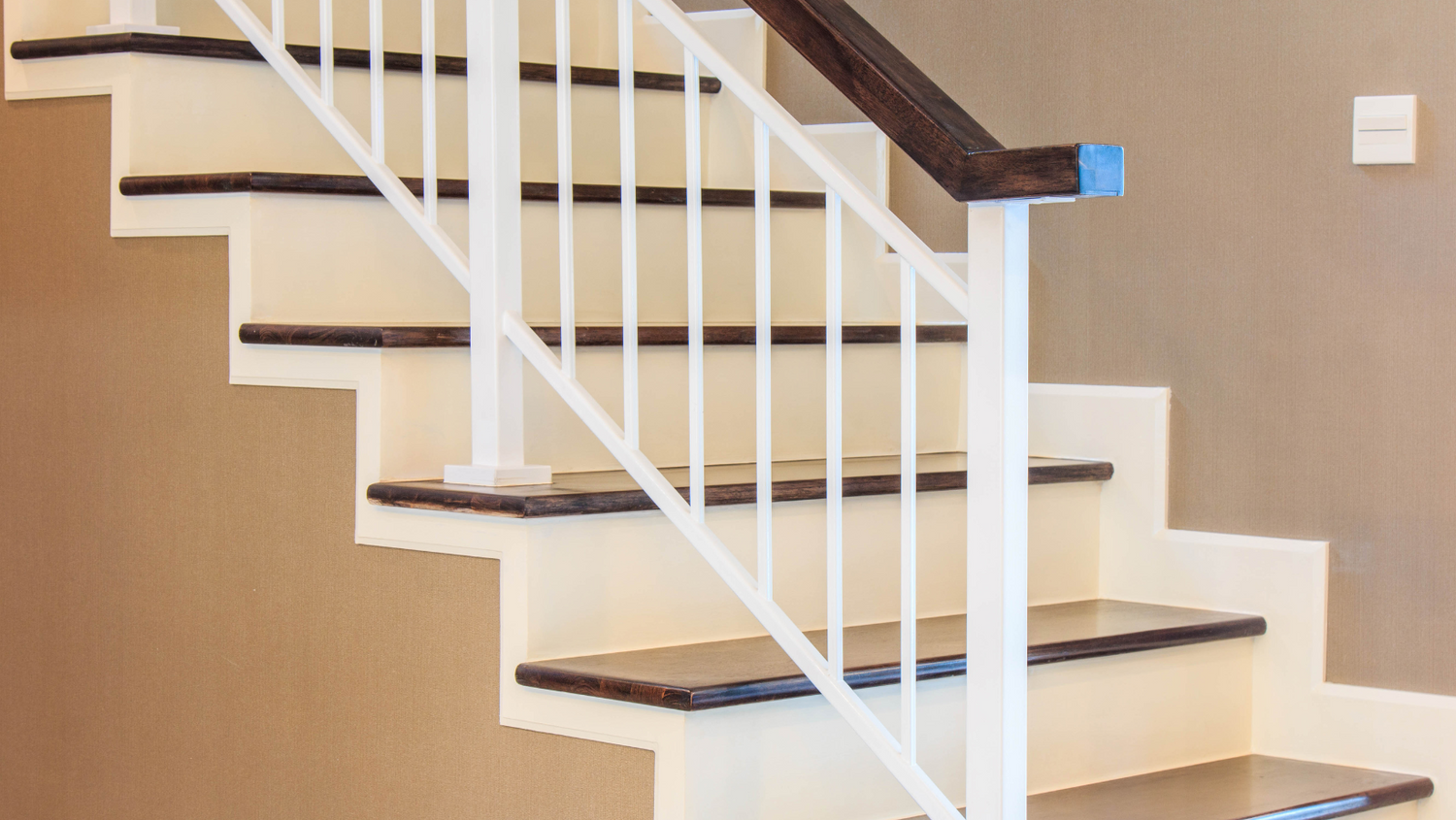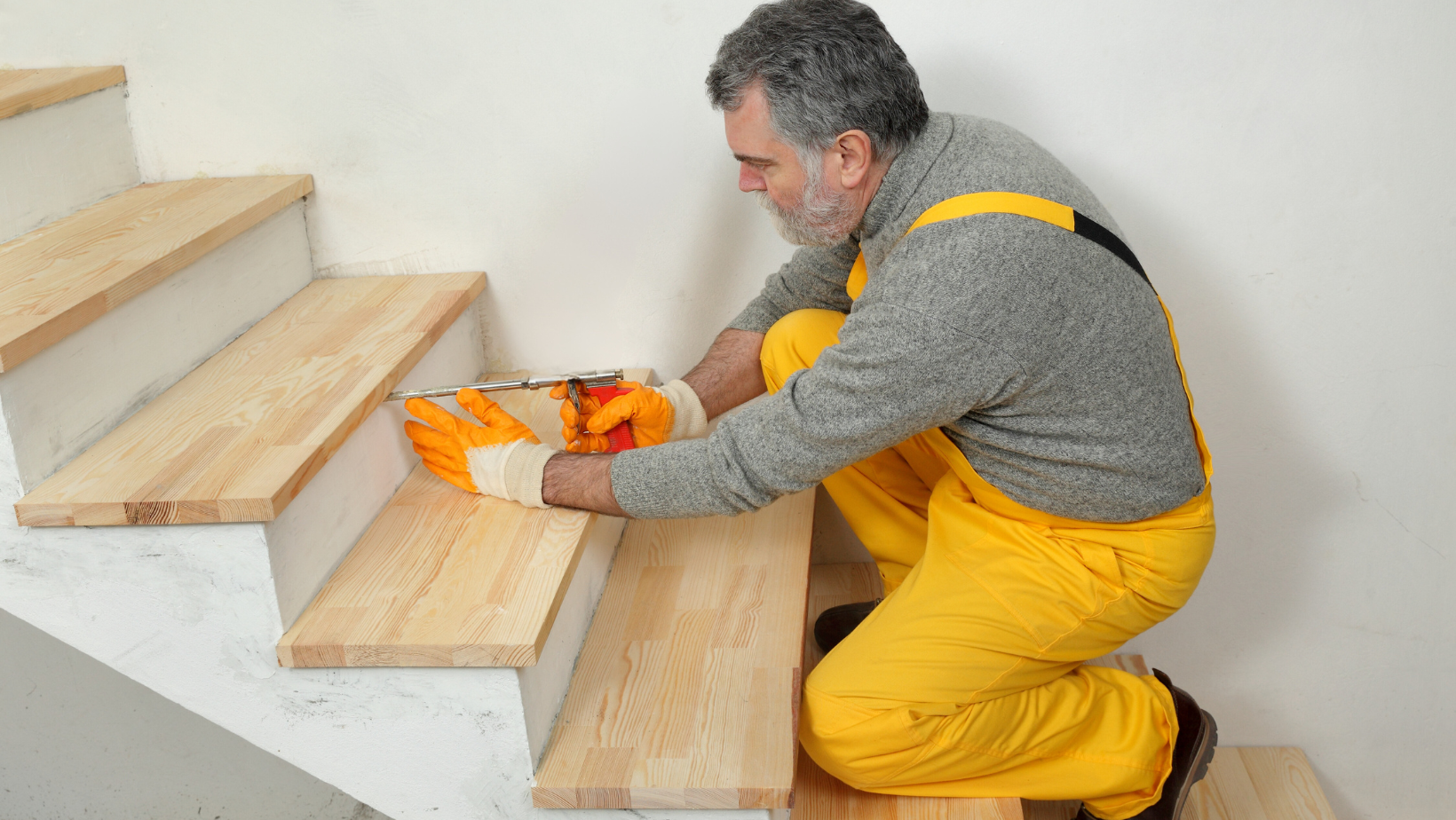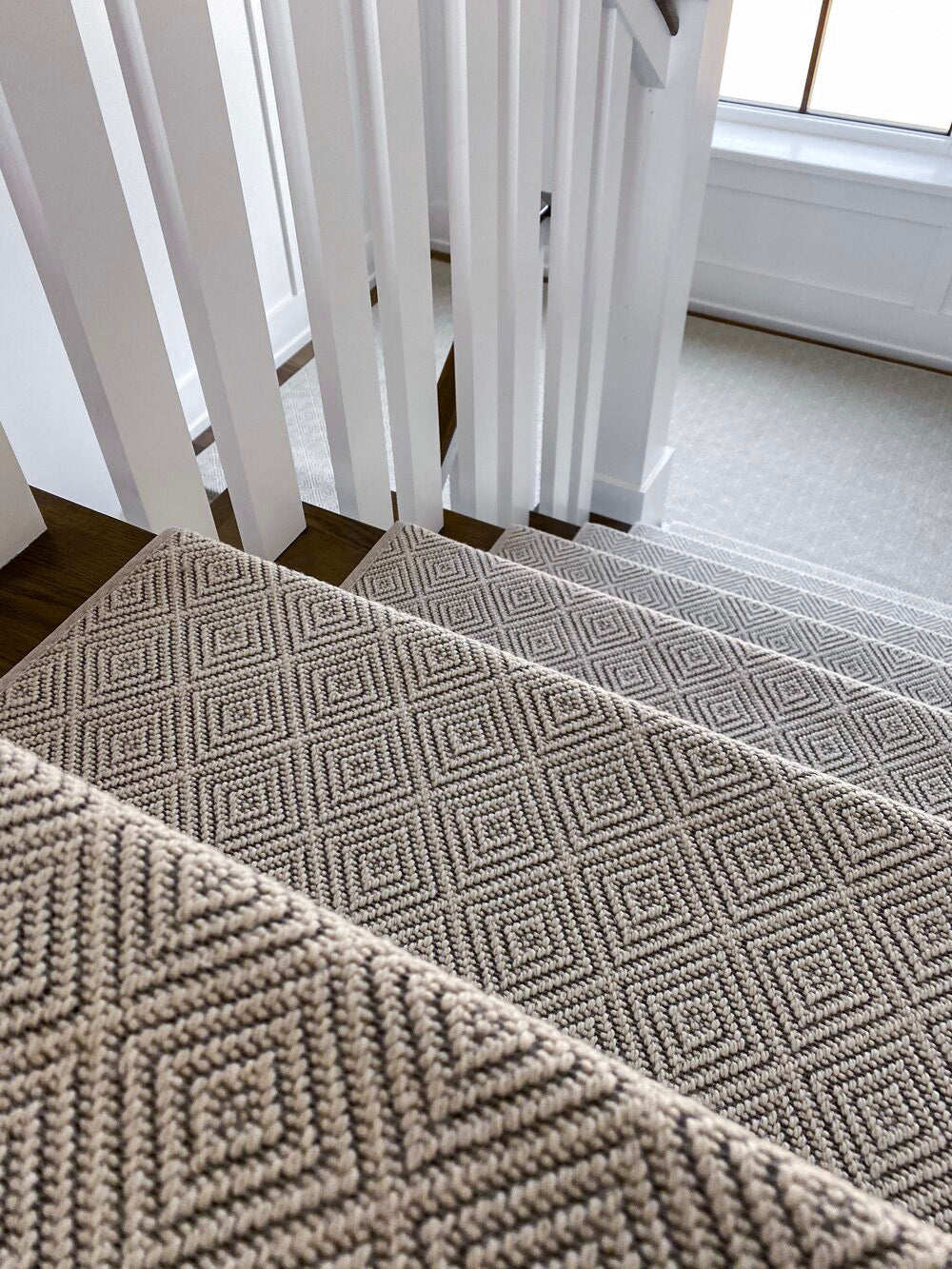A well-designed staircase enhances both safety and style in a home, but certain details, like a tread return, can make all the difference.
What is a tread return?
It’s the finished end of a stair tread that extends past the riser, creating a polished look while protecting the edges from wear.
Whether you're upgrading to carpet stair treads or installing hardwood stairs, understanding tread returns ensures a seamless, professional finish.
This guide breaks down their purpose, types, and key considerations so you can make informed design choices.
Keep reading to learn how tread returns enhance both aesthetics and functionality in your staircase. Especially when installing carpet stair treads.
What Is a Tread Return?
A tread return refers to the finished end of a stair tread that extends beyond the riser.
In simpler terms, it’s the part of the tread that overhangs the edge of the step, creating a smooth, finished look.
This feature is especially common in hardwood stairs, where the exposed side of the tread needs to be polished for a seamless appearance.
Tread returns are essential in staircase design because they enhance both the aesthetic appeal and functionality of the stairs.
The way the tread extends affects how the staircase looks and performs over time.
In some cases, staircases feature a double return tread, where both ends have an overhang, while others may have no return at all, depending on the design preference.
Why Is a Tread Return Important?
Tread returns are more than just decorative features.
They serve multiple practical purposes that contribute to both the safety and longevity of the staircase.
Enhancing Appearance
One of the primary reasons for incorporating a tread return is to give the staircase a polished, high-end look.
Without a tread return, the exposed edge of a stair tread may appear unfinished, which can detract from the overall elegance of the staircase.
By adding a tread return, the staircase appears more refined and seamlessly integrated into the surrounding space.
Improving Safety
A well-designed tread return can help prevent trips and falls.
The rounded edge created by the return offers a smoother transition between steps, reducing the likelihood of someone catching their foot on a sharp or unfinished edge.
In homes with children, elderly family members, or pets, the additional safety provided by tread returns can be particularly beneficial.
Protecting the Staircase
Stairs endure a significant amount of foot traffic over time, leading to natural wear and tear.
A tread return helps protect the edges of the treads, which are especially vulnerable to damage.
This is particularly important for staircases made from hardwood or other delicate materials, as the overhanging edge prevents premature chipping and deterioration.
Understanding Stair Dimensions and Tread Depth
When designing a staircase, it’s essential to consider both stair dimensions and what is tread depth, as they directly impact how the tread return is incorporated.
What Is Tread Depth?
Tread depth refers to the horizontal measurement of a stair tread from the front edge (nosing) to the back edge (riser).
In other words, it’s the space where your foot lands when stepping on a stair.
Understanding what is tread depth is crucial because it determines how comfortable and safe a staircase will be.
A deeper tread provides more space for foot placement, making the stairs easier and safer to walk on.
When installing carpet stair treads, the thickness of the material can slightly affect the tread depth, so it’s important to account for this when measuring.
How Stair Dimensions Affect Tread Returns
Tread returns are directly influenced by stair dimensions, particularly the width of the staircase and the type of stair design used.
If a staircase is enclosed on both sides, it may not require a tread return.
However, for stairs with exposed edges, a single or double tread return ensures that the stairs look complete and cohesive with the overall design.
Types of Tread Returns
Depending on the staircase style, different types of tread returns can be used to achieve the desired look and functionality.
Straight Tread Returns
This is the most common type of tread return, featuring a simple, straight overhang beyond the riser.
It works well with various staircase designs, from traditional to contemporary, and provides a clean, structured look.
Curved Tread Returns
For a more elegant and sophisticated appearance, curved tread returns are an excellent choice.
These returns feature a rounded overhang, adding a refined touch that pairs well with custom or high-end staircases.
They are often seen in grand staircases where aesthetics play a major role in the design.
Mitered Tread Returns
Mitered tread returns are crafted with precise miter cuts at the corners, creating a seamless, polished finish.
This design is especially popular in modern and contemporary staircases, where clean lines and smooth transitions are prioritized.
Choosing the Right Material for Tread Returns
The material of the tread return plays a critical role in both aesthetics and durability.
Common materials include:
-
Hardwood – Offers a timeless and luxurious look, ideal for traditional and modern staircases alike. Hardwood returns are durable and can withstand years of use.
-
Metal – Provides an industrial, contemporary feel and is often used in minimalist designs.
-
Laminate – A budget-friendly option that mimics the look of wood while being easy to maintain.
Installation Considerations for Tread Returns
A tread return should complement the overall design of the staircase and the surrounding space.
Choosing the right color, finish, and profile ensures that the tread return enhances the staircase rather than looking out of place.
Compliance With Building Codes
Building codes regulate stair dimensions, tread depth, and tread return designs to ensure safety and accessibility.
It’s crucial to check local building regulations to ensure that the staircase meets required safety standards.
DIY vs. Professional Installation
While some homeowners may choose to install tread returns themselves, hiring a professional ensures precise cuts and seamless integration.
If the staircase involves custom features, a professional can tailor the tread returns to match the unique requirements of the space.
The Role of Carpet Stair Treads in Tread Returns
If you’re planning to install carpet stair treads, it’s important to factor in how they interact with the tread return.
The added thickness of the carpet affects what is tread depth and may slightly alter the stair dimensions.
Ensuring that the carpet sits flush with the return prevents uneven surfaces that could become trip hazards.
Steps To Success
A tread return is an essential feature in staircase design that enhances both the functionality and aesthetic appeal of a staircase.
Whether you opt for a straight, curved, or mitered tread return, choosing the right style and material ensures that your staircase is both safe and visually appealing.
By considering stair dimensions, tread depth, and material selection, you can create a staircase that is not only durable but also enhances the overall interior design of your home.
If you’re looking to upgrade your staircase with high-quality carpet stair treads, Oak Valley Designs offers premium solutions tailored to your needs.
Contact Oak Valley Designs
-
Website: https://oakvalleydesigns.com/
-
Phone: 706.331.0315
-
Email: info@oakvalleydesigns.com
-
Address: 30 River Ct SW Bldg E Cartersville, Ga 30120



